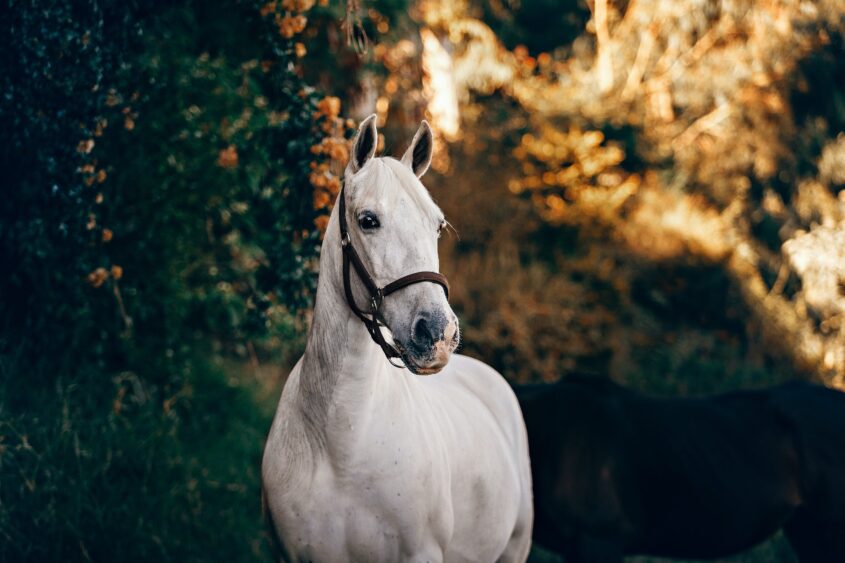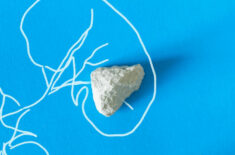Overview
Horses are highly intelligent and intuitive animals with a greatly developed sense of smell.
Aromatherapy and the use of essential oils can help you support a healthy horse in a natural way.
Read on to learn more about the best essential oils for horses and how to use them.
What Are Essential Oils?
Essential oils (EOs) are highly concentrated plant extracts from various sources such as tree bark and resin, plant leaves, stems, roots, flowers, nuts, seeds, and even fruit.
The benefits of essential oils are thanks to an abundant amount of healing and medicinal compounds known to support the body’s healing processes.
The use of essential oils goes back hundreds of years across many different cultures and healing disciplines like Traditional Chinese Medicine and Ayurveda.
What Is Aromatherapy?
The therapeutic application of EOs is referred to as aromatherapy.
It’s considered a complementary and alternative medicine and holistic healing treatment.
This practice’s primary goal is to use EOs in ways that promote and improve one’s mental, emotional, and physical health and well-being aromatically.
Essential Oils As Healing & Well-being Agents
Different oils have different active compounds and properties.
Many EOs have anti-inflammatory and antiseptic properties that can help protect and strengthen the immune system.
The Best Essential Oils For Horses & Equestrian Well-being
Frankincense:
This oil is highly anti-inflammatory and makes an excellent wound healer thanks to its antiseptic and antibacterial properties. When used as a chest rub, it can help support respiratory health.
This oil can also be calming and soothing when a horse is anxious or apprehensive.
Roman Chamomile:
This oil is highly calming and perfect for jitters, anxiety, challenging behavior, and anger. It can also be used topically as a gentle massage to address muscle cramps.
Lavender:
Lavender is calming and also healing. It’s an anti-inflammatory and may help accelerate wound healing. It’s also a natural pain-reliever.
Tea tree (Melaleuca):
Tea tree is one of the most potent antiseptic and antimicrobial EOs. Use it as a wound wash and to prevent infections. It has antibacterial, antifungal, and antiviral properties too.
Peppermint:
Thanks to its high content of menthol, peppermint oil is highly anti-inflammatory, soothing, and pain-relieving. Use it with a carrier oil as a rub for sore muscles, spasms, aches, and sprains.
Clary sage:
It also relieves muscle spasms and tension.
Ginger:
It is a potent anti-inflammatory.
Oregano:
It is sometimes referred to as ‘nature’s antibiotic.’ Use it to treat wounds and prevent infections.
Vetiver:
It can help with joint inflammation and arthritis.
Lemongrass & Citronella:
Mix then with water and make a gentle DIY repellent fly spray. (Do not spray near the eyes or face.)
Other EOs that might be useful for your horse are:
- Geranium
- Marjoram
- Sandalwood
How To Use Essential Oils For Horses
Use EOs topically on your horse by diluting first with a carrier oil like coconut oil or olive oil.
Stick to 2-3 drops of EO per 1 teaspoon of carrier oil.
You may also use a diffuser around your horse as long as the space is well-ventilated.
Cold or warm compresses on sore muscles may also be soothing.
Safety Concerns
EOs are potent – a little goes a long way.
Start by introducing small amounts of oil to your horse as they are very sensitive creatures.
Gradually increase the amount of oil if your horse is receptive or unaffected by it.
Always make sure you’re using 100% natural, therapeutic-grade products.
Many products are diluted or contaminated, and this can worsen symptoms or cause adverse reactions.
ALWAYS consult with your vet before using any EO on your horse.
If your horse experiences any skin irritation or adverse reaction to an oil, discontinue use immediately.
Horse owners should perform a patch test on an unaffected area of the skin and wait 24 hours to see if there is a reaction before using any oil regularly.
If you accidentally get EOs in your horse’s eye, do not rinse with water, which can worsen the irritation because EOs are hydrophobic. Instead, rinse with vegetable or nut oil or even milk to help cleanse the area thoroughly.
Never let your horse ingest any EOs, as this can be very toxic.
Stick to topical application and inhalation only.
Do not use on pregnant mares or foals (offspring).












